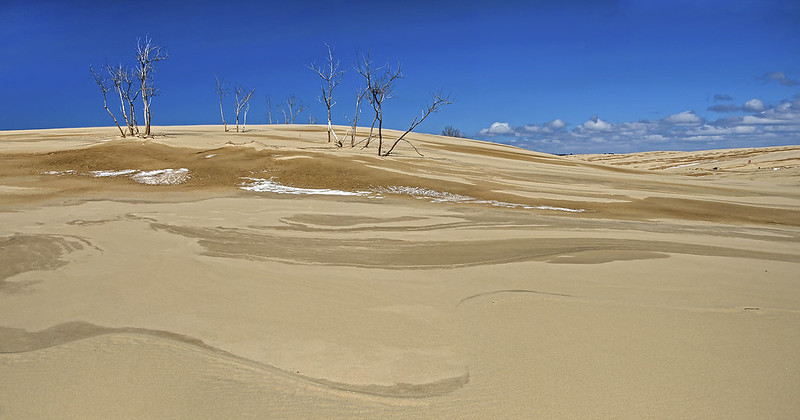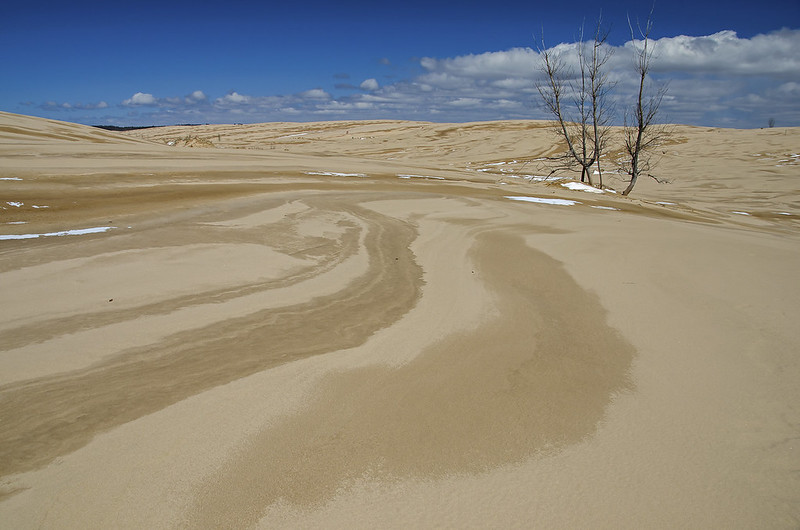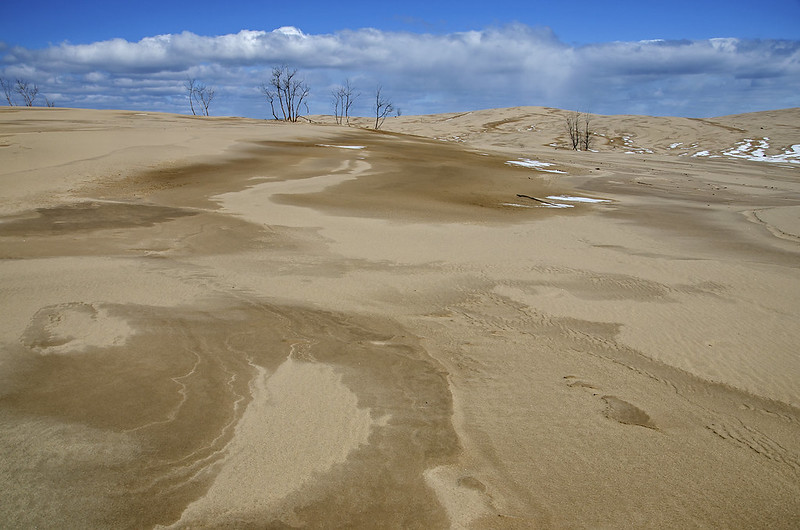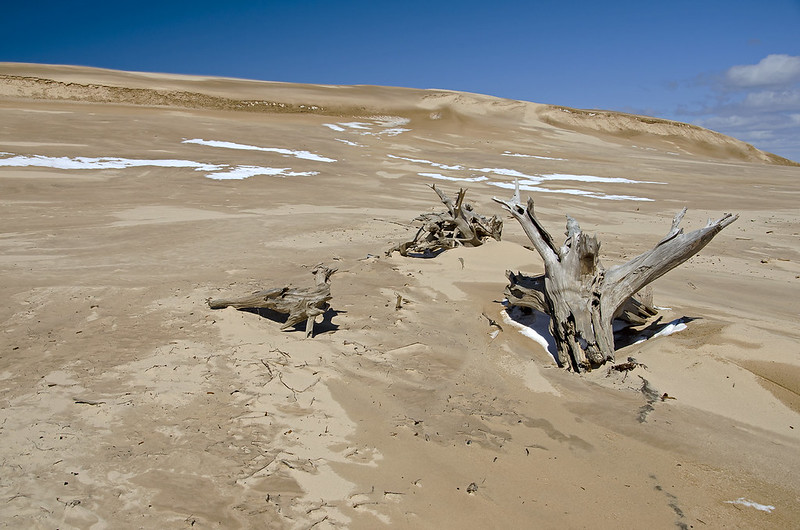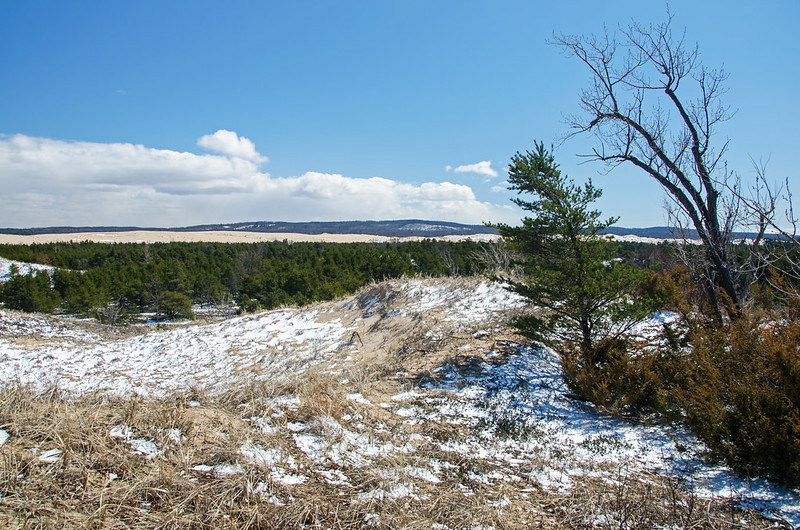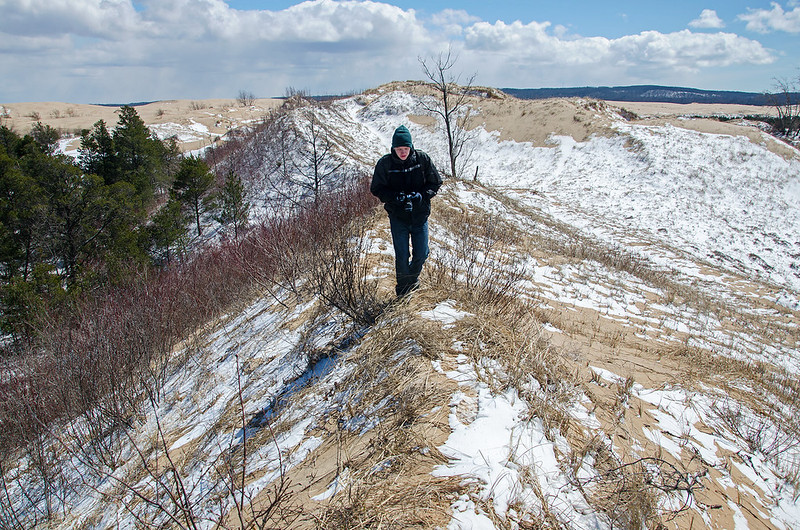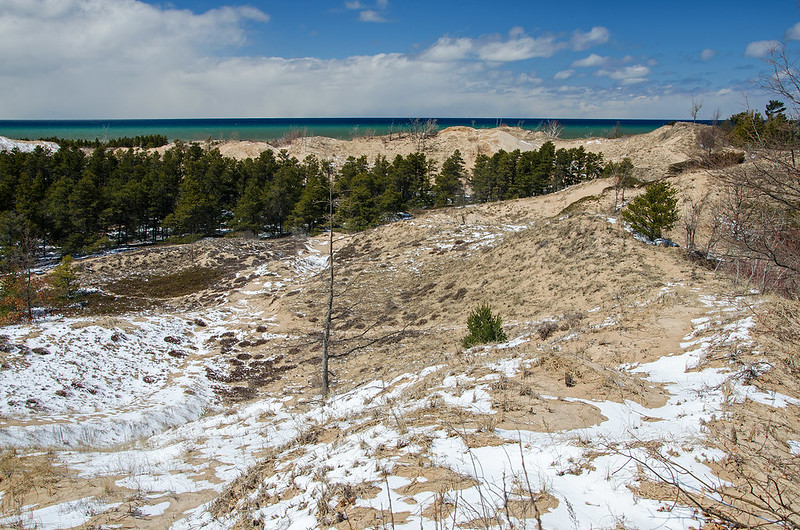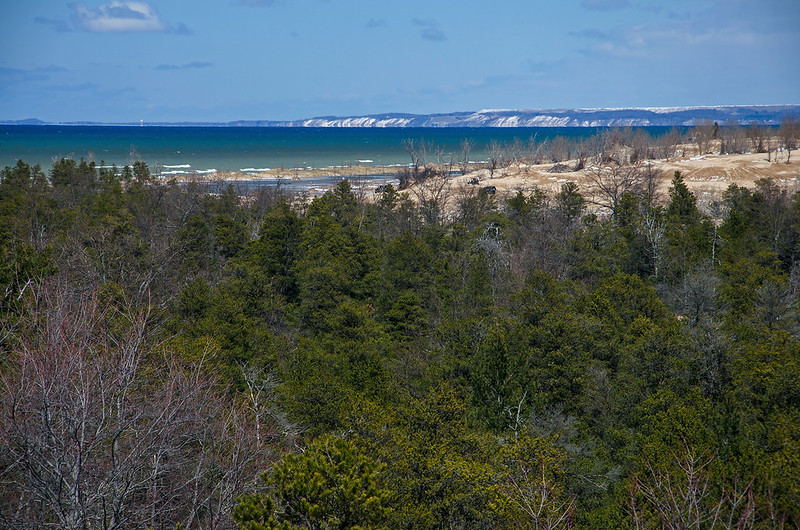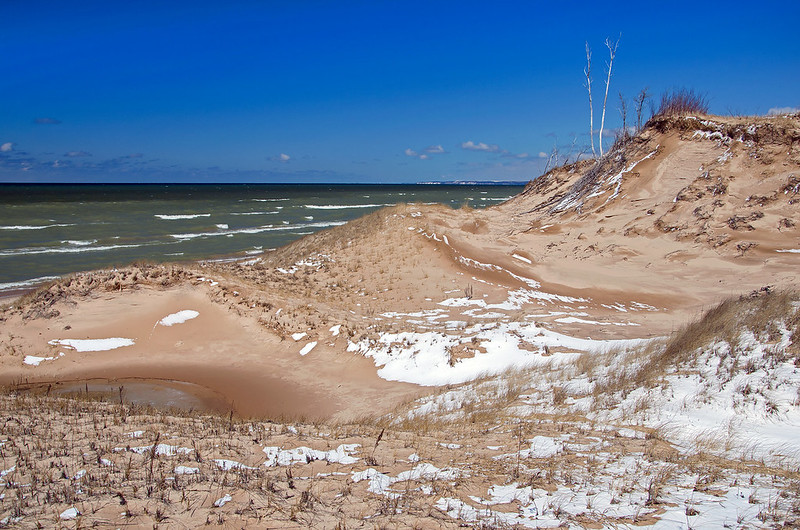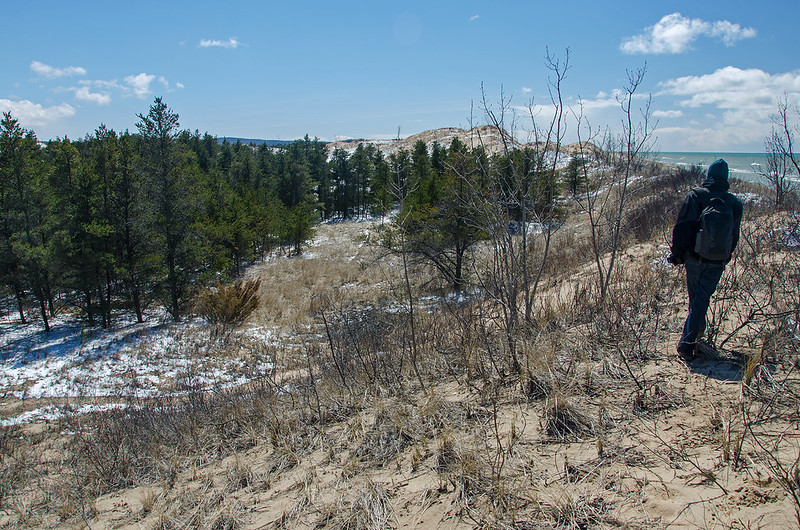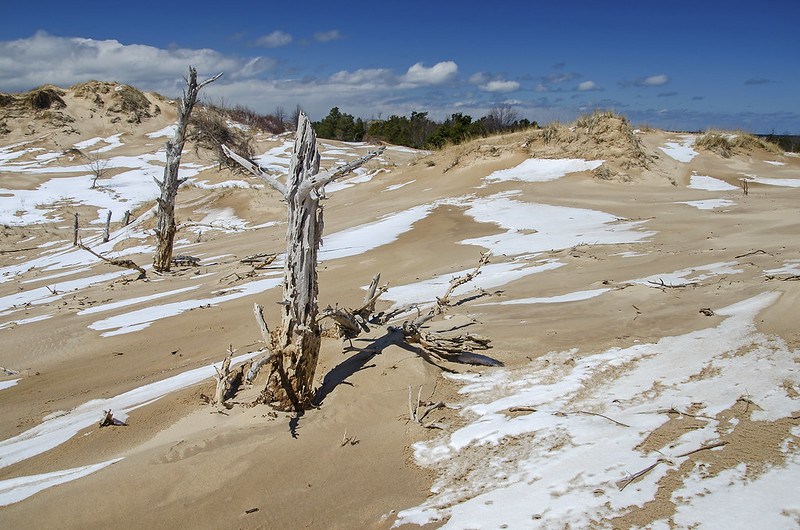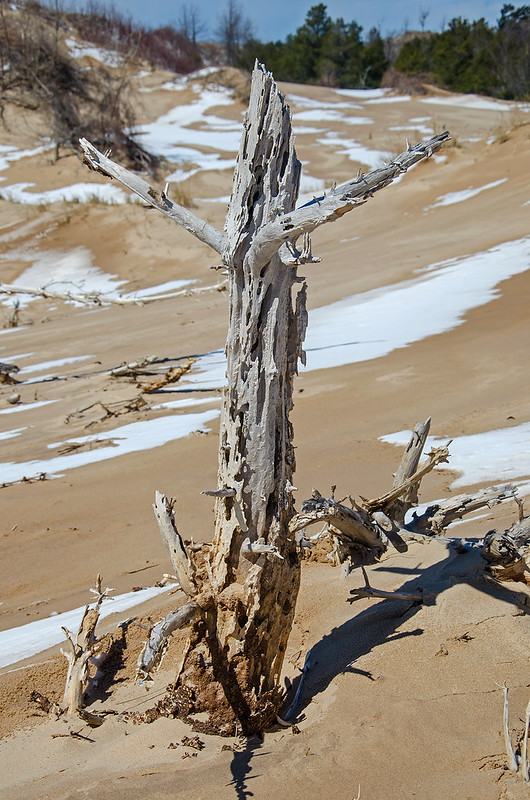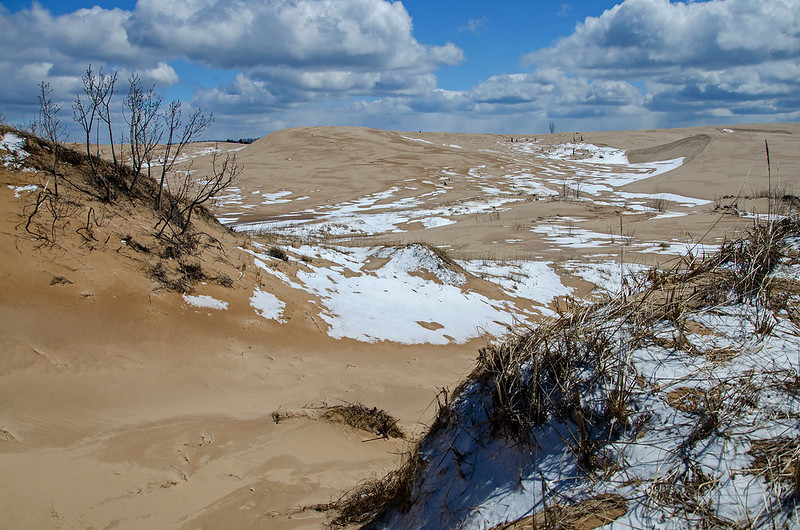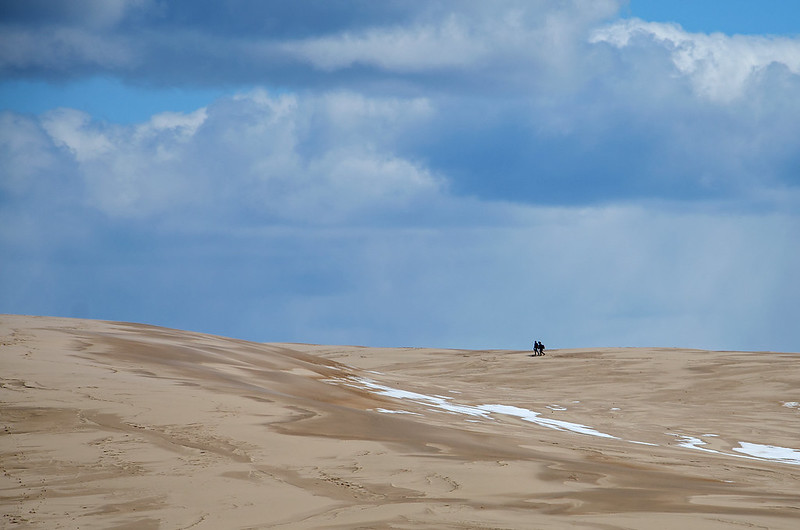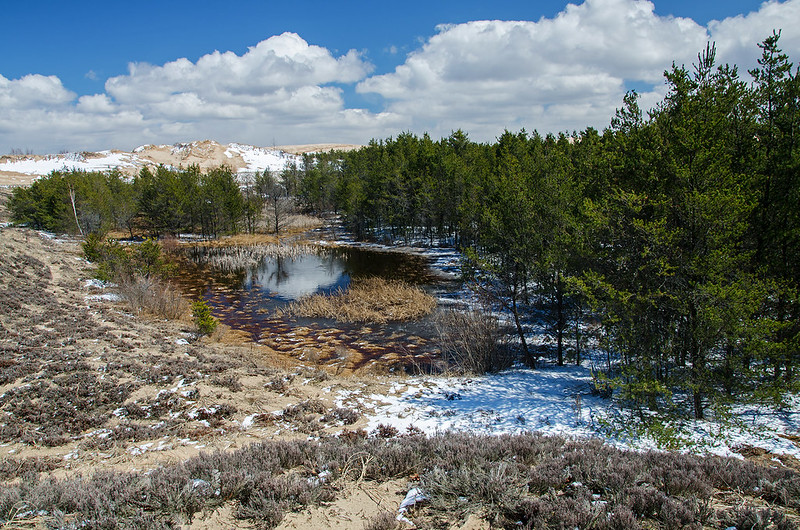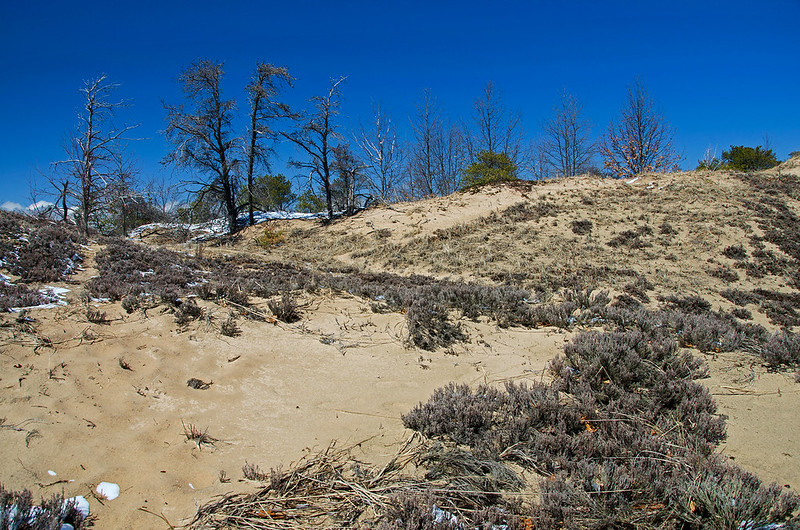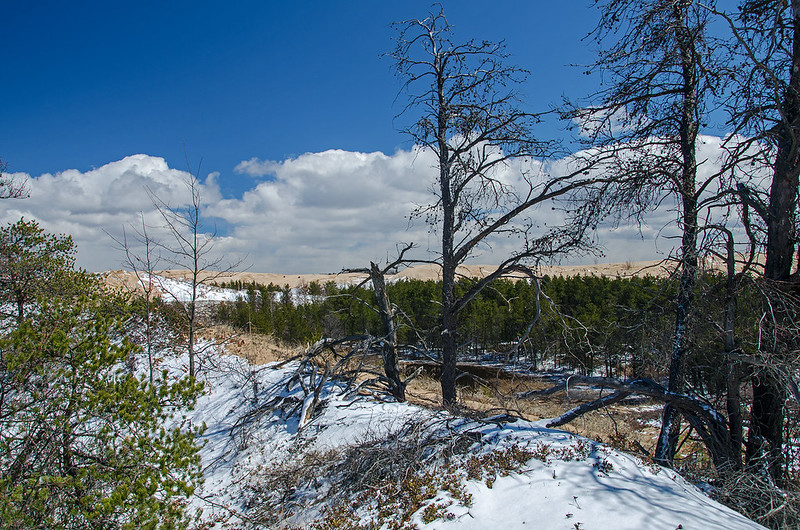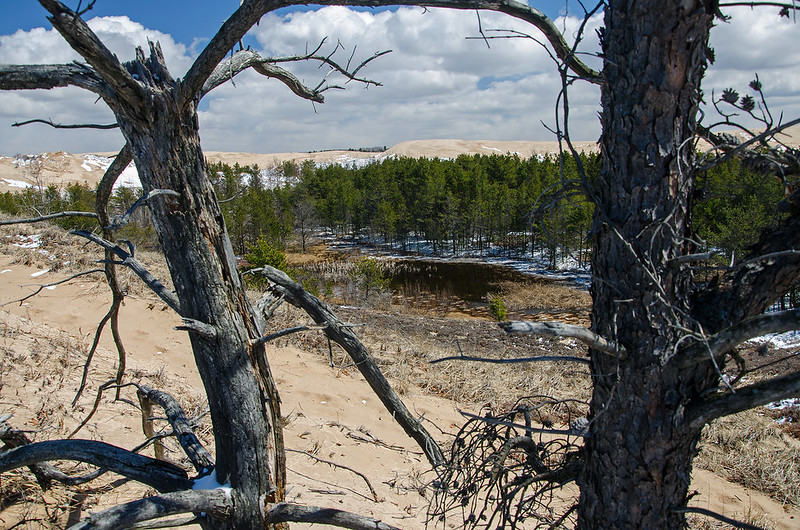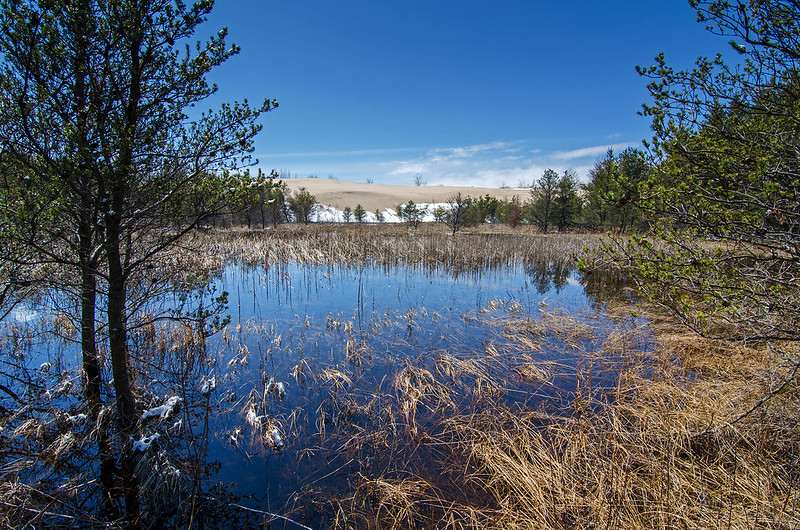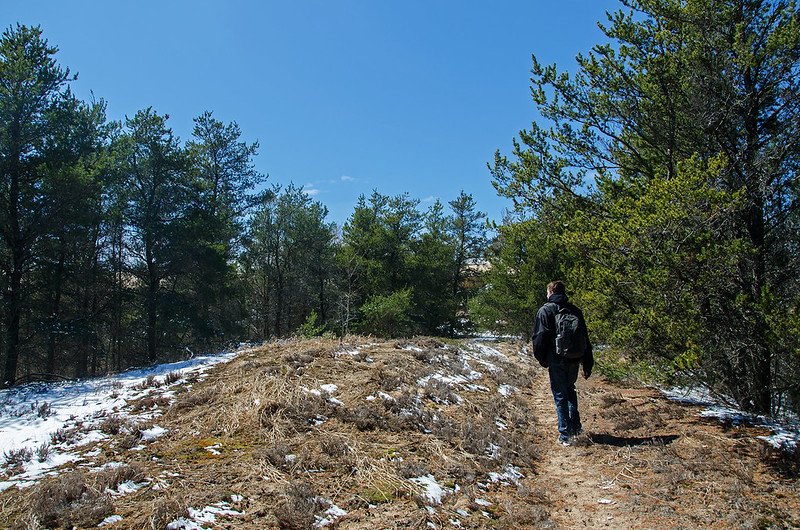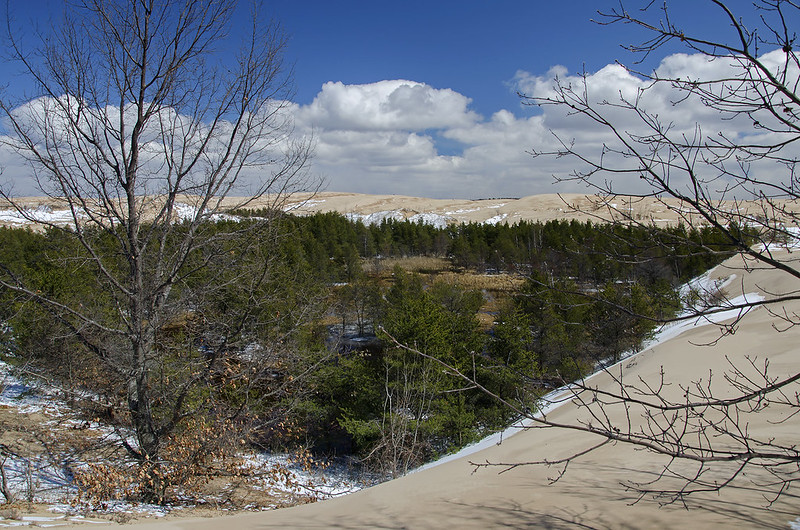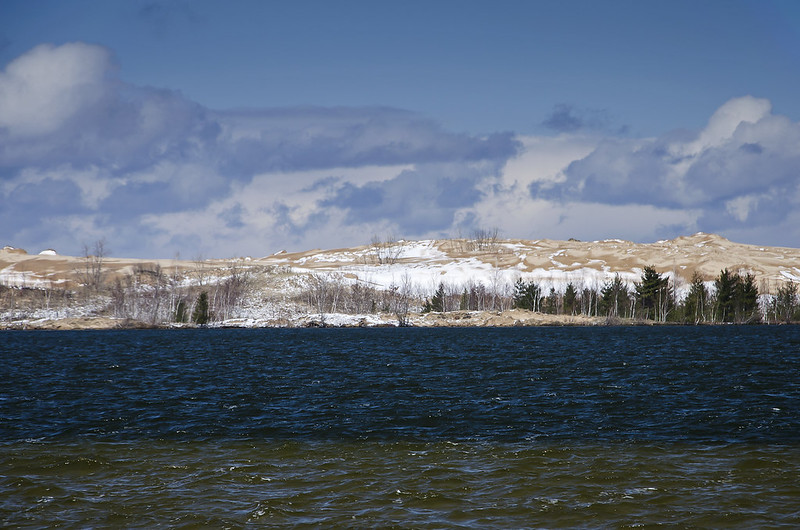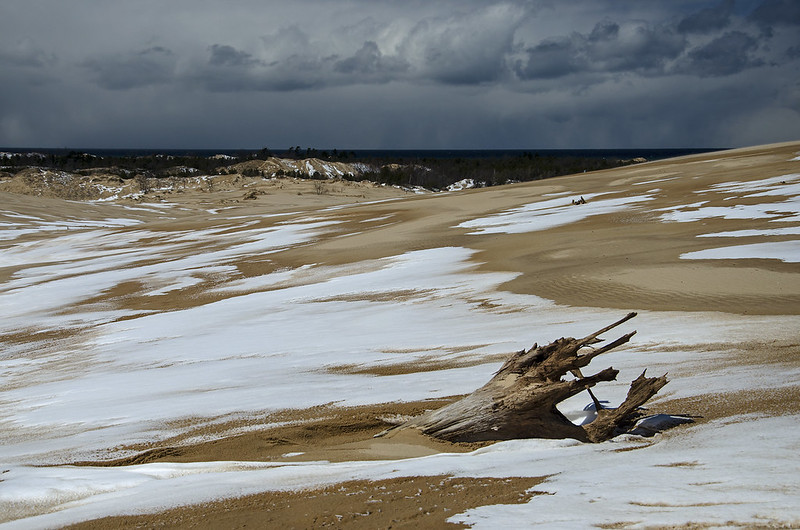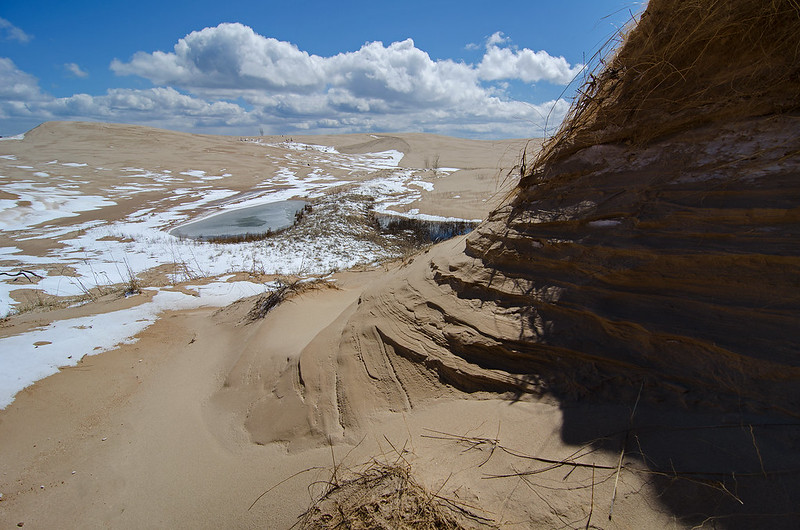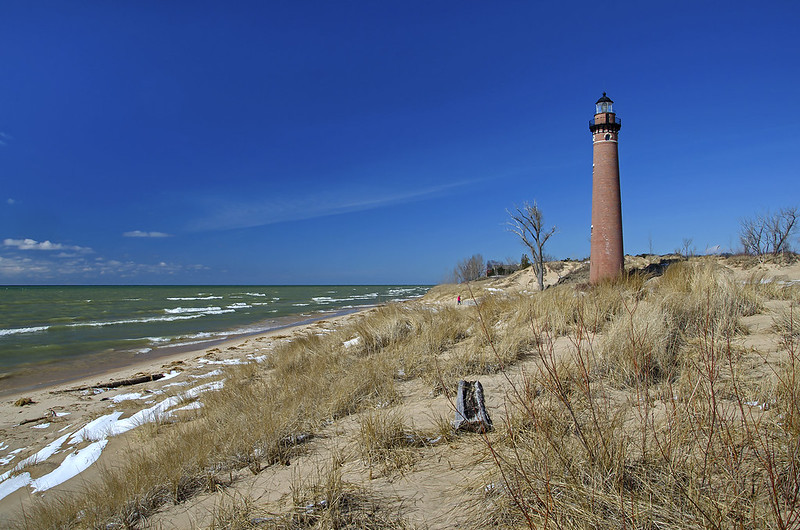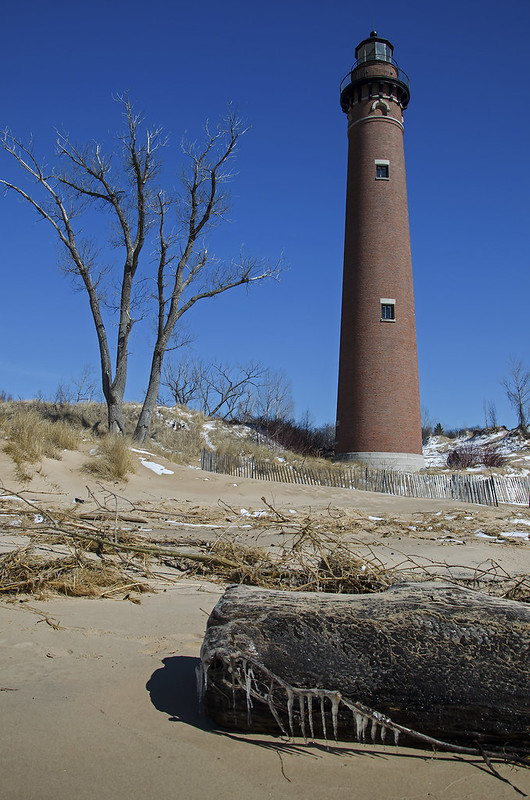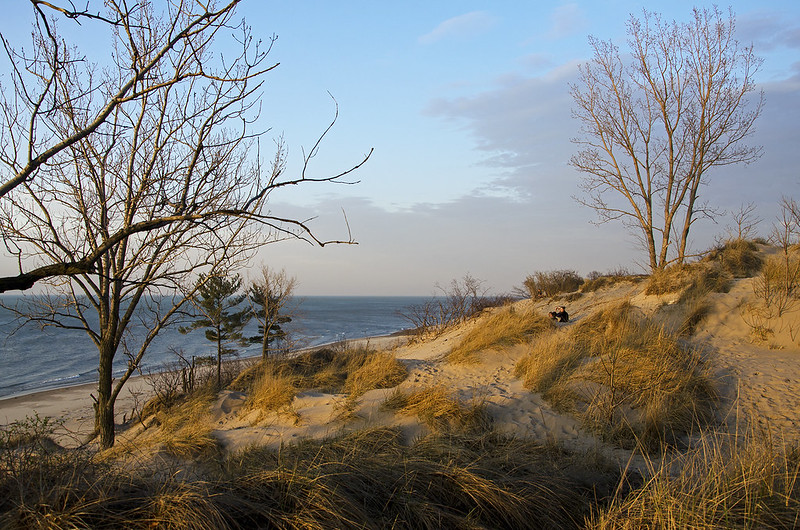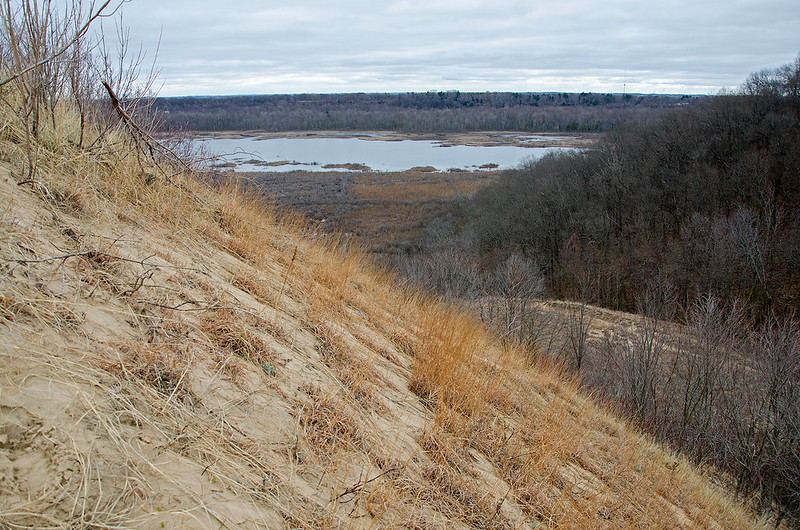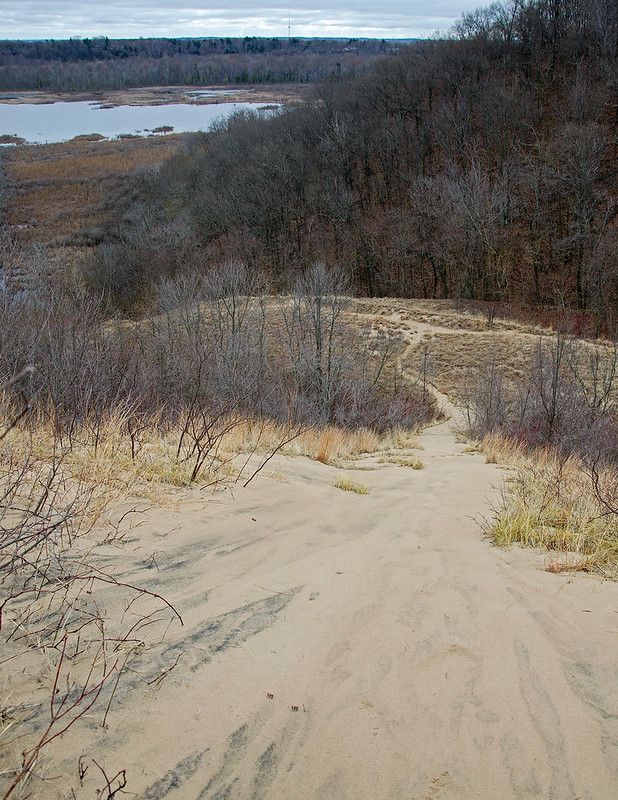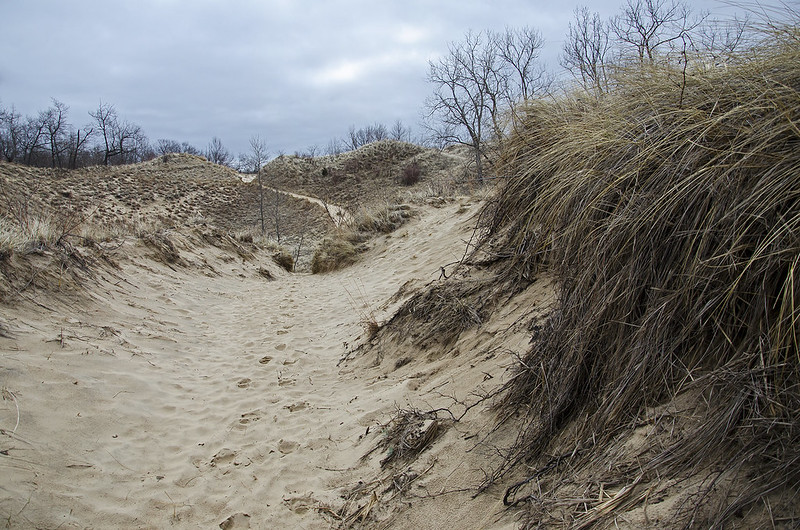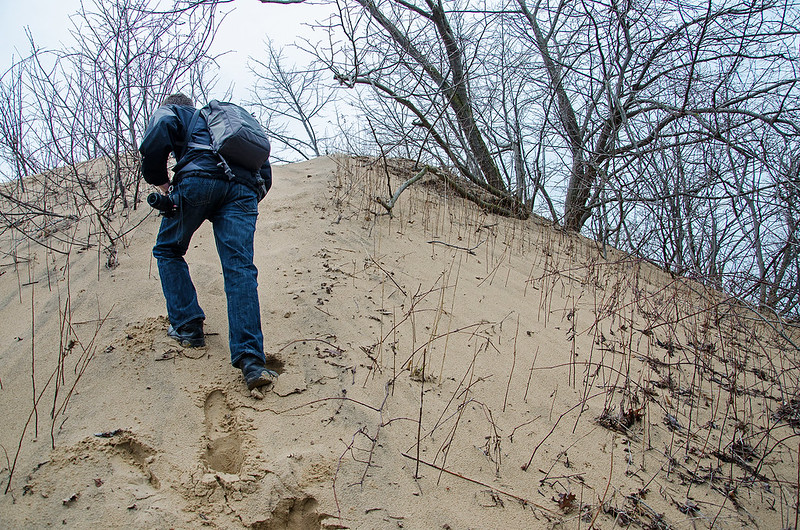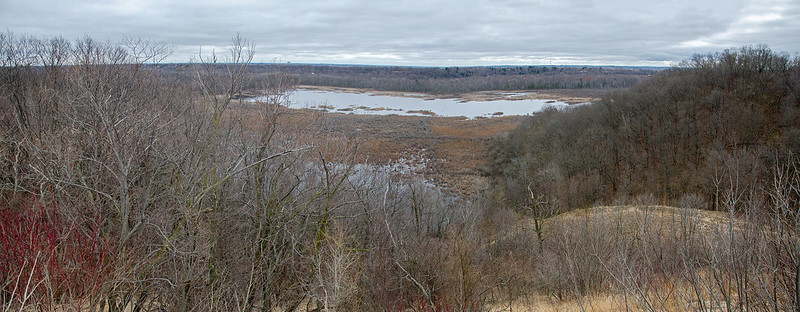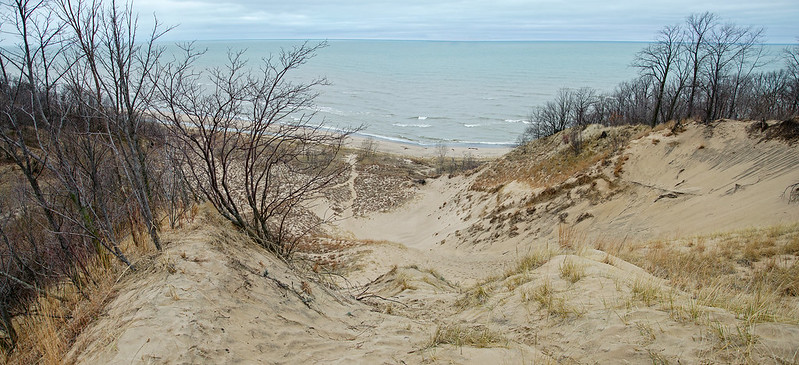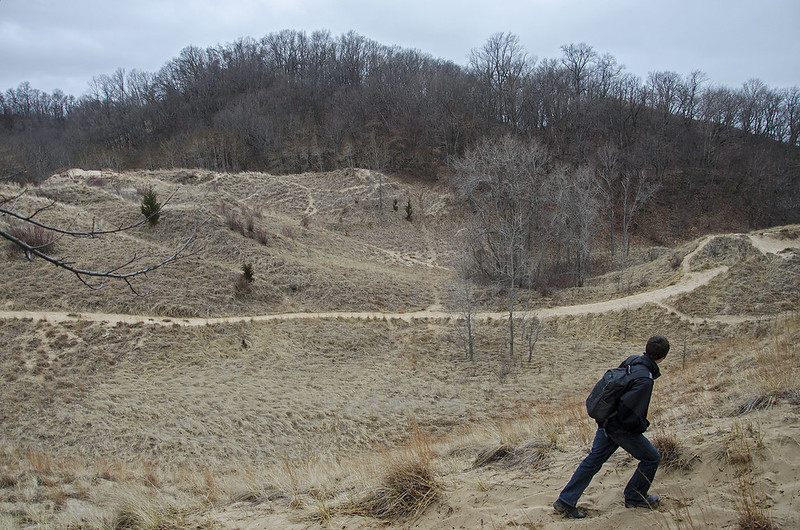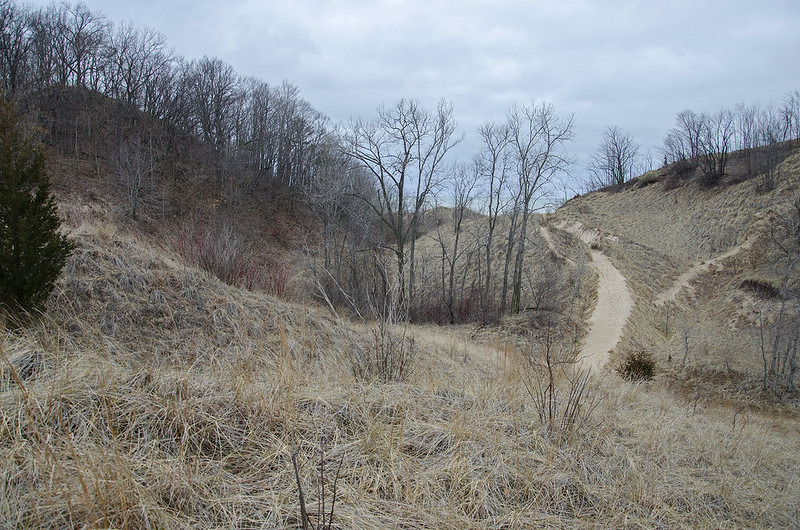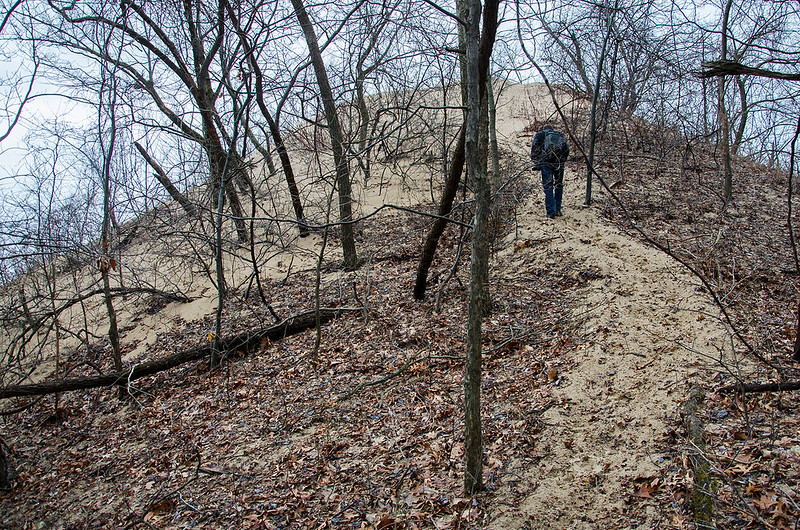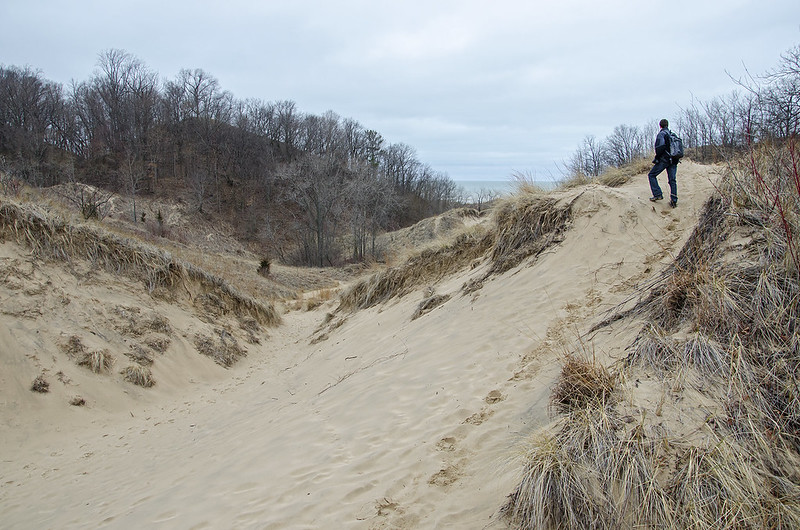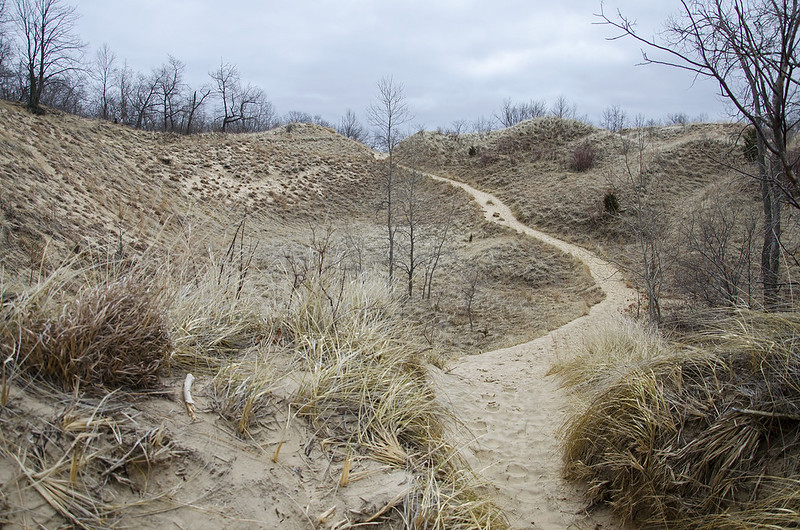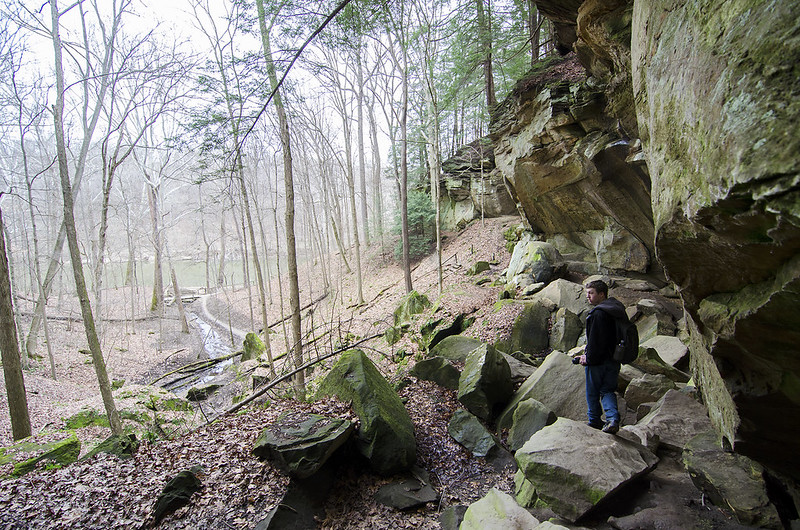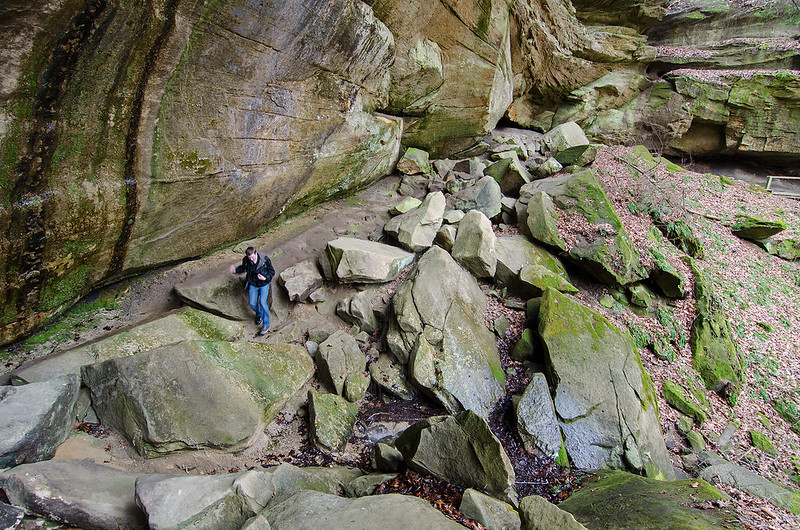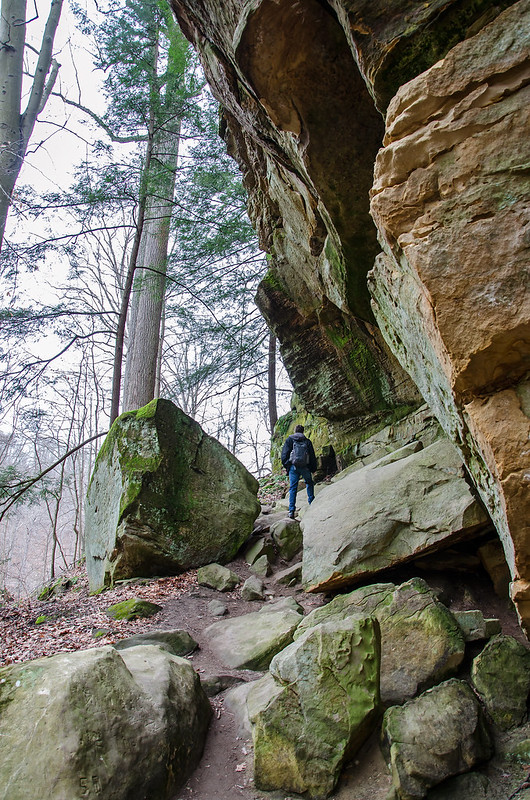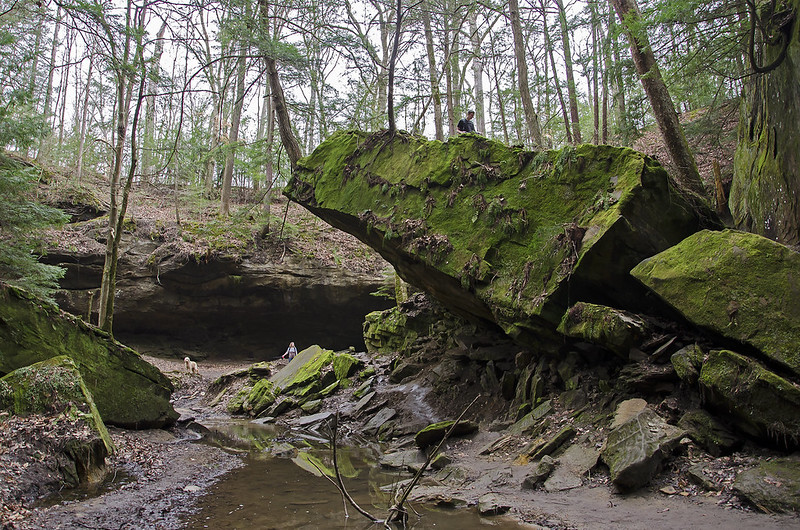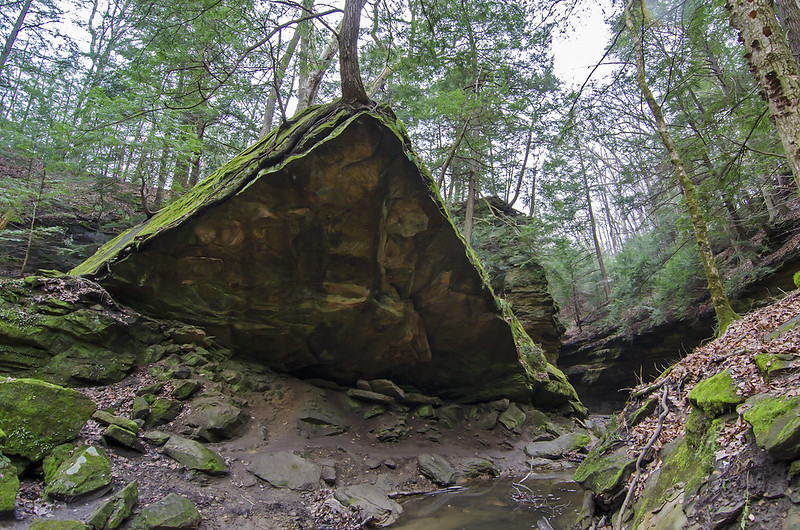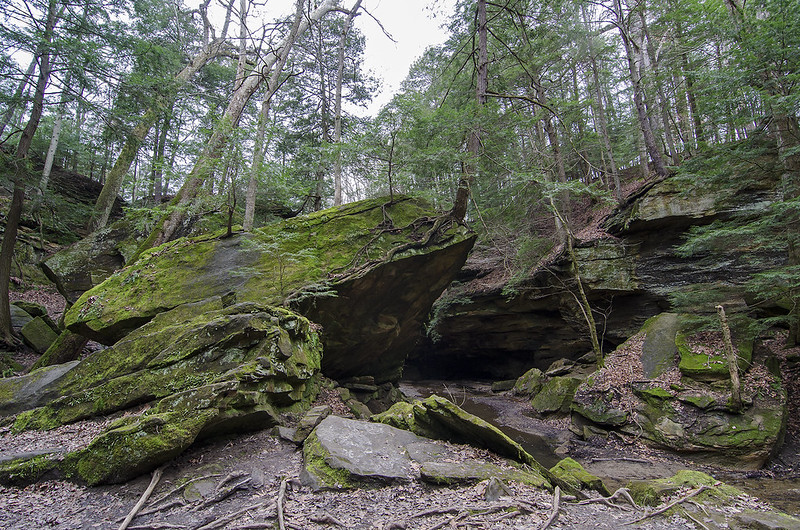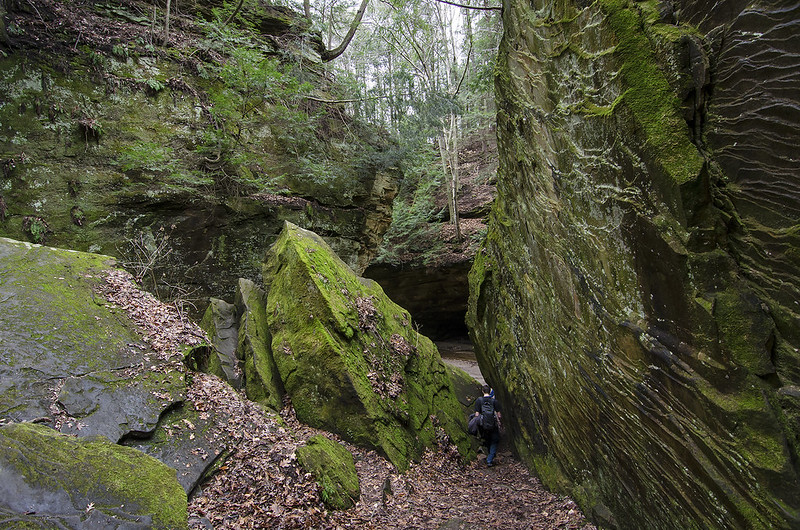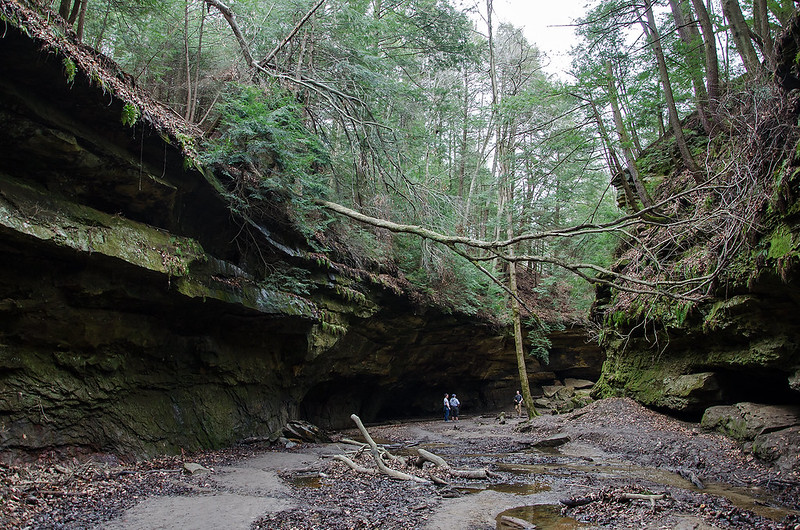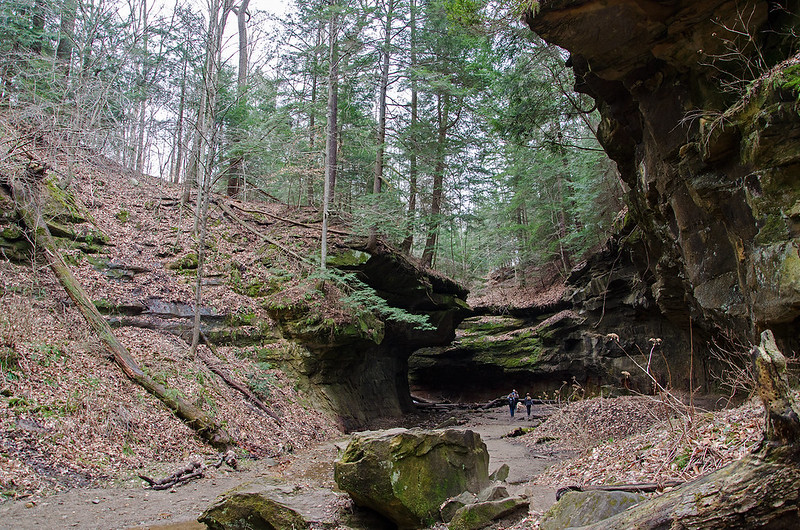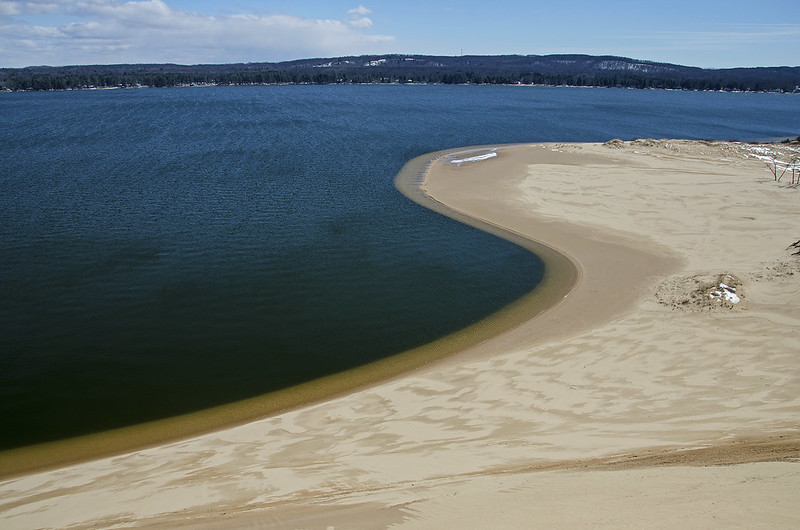
The final leg of our trip was the hike to Silver Lake from Lake Michigan. As we approached, we were on top of a tall dune, so at first, we could not see the lake, but as we walked closer to the living edge of the dune, the lake appeared below. I would estimate we were at least 75 feet above the lake, but in photos, the distance isn't as obvious until you study the entire image.
The sands of the dunes constantly blow into Silver Lake, in essence, moving the dune grain by grain away from Lake Michigan, and into Silver Lake. The shore of the lake must change constantly.
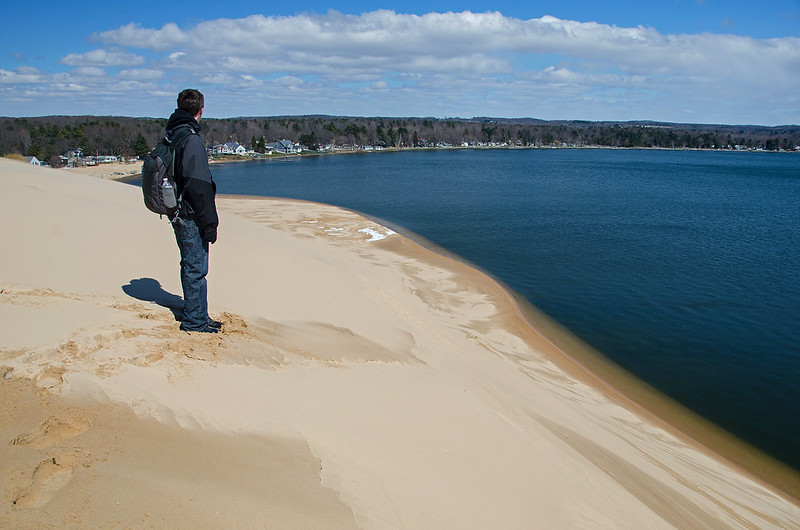
The depth of Silver Lake is around 20 feet, and the sand of the moving dunes can be seen for quite a bit of depth, yet it appears to drop off very quickly. I haven't been in this lake, so I'm not certain if it does indeed drop, or if the optical qualities of the water simply end at a certain point and the bottom cannot be seen.
Homes across the lake give an idea of the height of the dune, they're quite a bit below us. The home closest to the dune appears to have a bit of maintenance necessary to keep the garage from being buried by the sand. In some spots, the sand is about 3-4 feet up the garage wall. An interesting back yard to say the least.
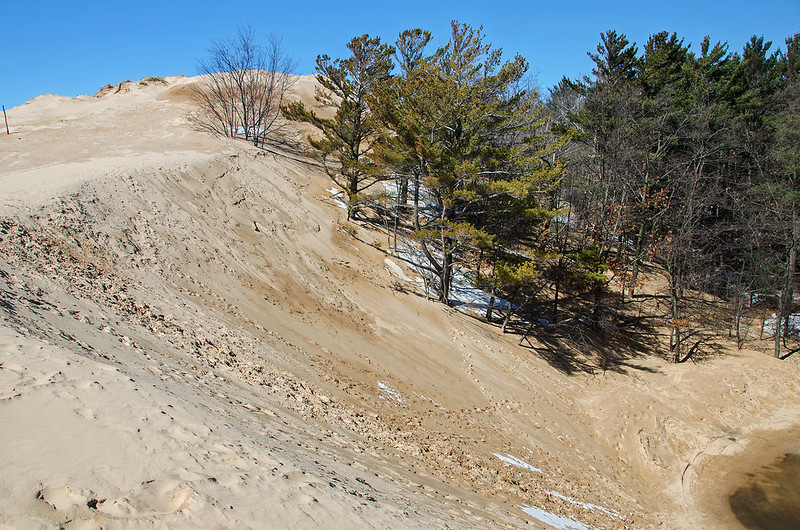
We back tracked a bit to avoid walking on private property to return to the trailhead. This brought us back into the dunes about a hundred meters or so, and over to the area where the dunes are actively burying the forest. Soon, these trees will die as they become part of the dunes of Silver Lake State Park - only to be revealed in a few hundred years.

